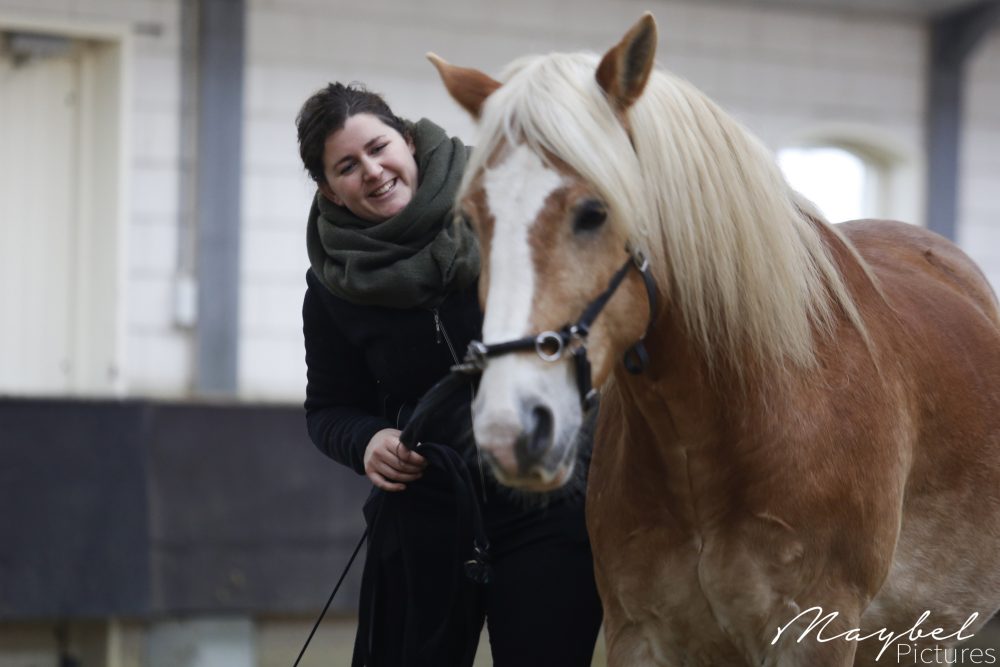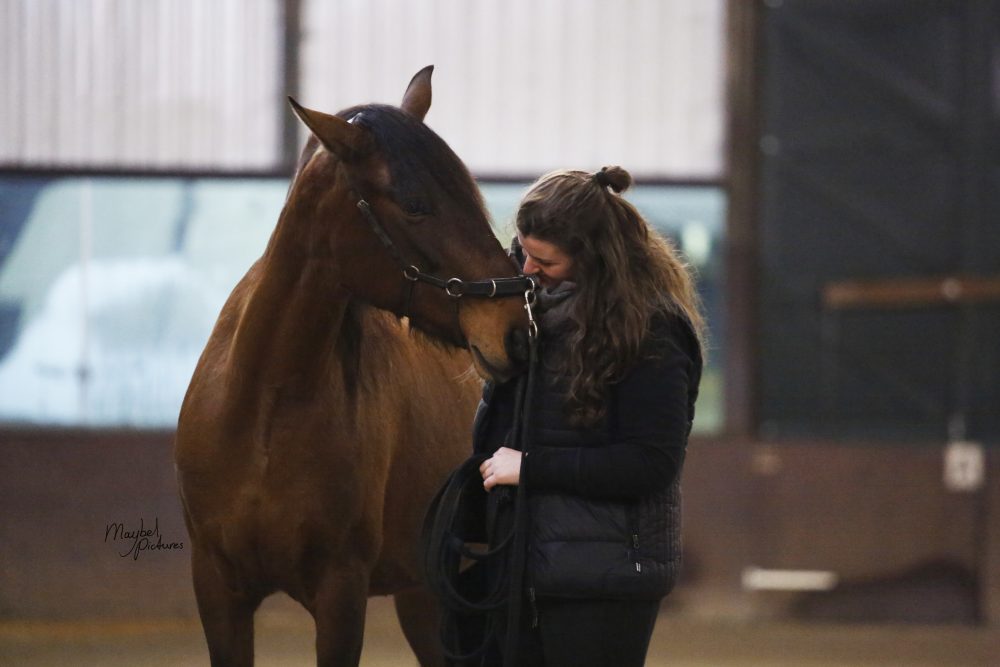Everything starts with the connection between two beings. A bond between horse and human can only be built on the basis of mutual understanding and trust. A horse often doesn't chose us. We choose the horse. It is our responsibility to make sure that the horses needs are met and that the horse can express their personality and emotions. We have to learn to read, understand and feel the horse. And to learn to speak a language the horse can understand.
It is important to learn how to read the bodylanguage of the horse, to be able to understand how the horse feels and what the horse is telling us. Secondly, we need to learn to control our own body language to be able to communicate what we want. We have to become aware of our 'mindset', the thought patterns that determine our experience of reality and influence our body language. When we become aware of how our mindset changes the way we communicate, we can work on creating positive possibilities. Thought patterns that help us build solid relationships with our horses. This proces is never finished. It is a proces of growth which is continiously part of our lives. Besides, every horse is different, every horse needs something else from us to feel safe and seen. We are given the chance to explore and develop different sides of ourselves, to become better partners for our horse.
In my trainingsessions and lessons connection and communication are always priority number 1. To ensure the wellbeing of the horse, but also because that for me is what it is all about. Being together with horses.
I combine my knowledge of psychology (Radboud University, Nijmegen, the Netherlands) with the philosophy of the Paardenmaat and my father Piet Nibbelink to guide my students toward a solid communication with their horses.


Everything you give attention to grows. A simple mantra that invites to appreciate what is going well. Which is easier said than done, because our inner critic always thinks there is something to improve. That doesn't always make training horses more fun. Which was the point to begin with.
By shifting our attention to what we want to achieve instead of what we cannot yet do, to the talents and resources we and our horses have, instead of our weaknesses, we create a positive setting in which human and horse feel safe to learn and experiment. This is more fun, but also much more effective.


Even though riding horses is part of our cultures for centuries, a horse is not made to carry a human. In the natural balance of a horse the weight of the rider is carried by the frontlegs. The joints of the frontlegs are hinge joints, which means they cannot bend in them and are not able to carry the extra weight with muscles. Instead, they carry the extra weight with joints, tendons and ligaments. Which causes frontleg injuries in many horses. The hind legs of the horse do have a possibility of bending, because of the function of hips, knees and hocks. There they can carry the extra weight with muscles, which makes the hind legs more suitable to carry the rider.
We want to be riders, so it is our job to make sure that the horse is strong enough to carry us. In practice this means that we need to train the horse to change the natural balance into a balance in which the horse carries more weight on the hindquarters, so that the frontlegs can remain healthy. The dressage for the horse consists of exercies that strenghten the hindquarters, make the hindquarters more flexible and in the end challenge the horse to transfer their point of weight more toward the hindquaters.
The Academic Art of Riding by Bent Branderup® is a trainingphilosophy with logical successive steps that strengthen and supple up the horse. It unites the knowledge of the old masters with modern insights about biomechanics to make the art of riding come alive in our time. The academic art of riding does not limit itself to the physical training of the horse. It embraces the philosohy of human and horse becoming one, as a centaur feeling. The ‘art’ in academic art of riding is the moments where it all comes together, where two souls want what to bodies can.
Since 2018 I am a licensed Bent Branderup Trainer®. I pursue the ideals of the academic art of riding with heart and soul and am dedicated to share these ideals with others.

